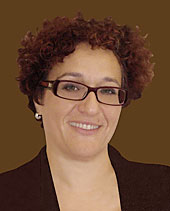The promotion of the European project «LIFE+» constitutes a shield of protection for the ancient palm tree forest in Preveli
“Woodland is our country itself and when we protect it, we protect our country as well” underlined in an interview to “In-On” magazine the Head of the Forests Division in Rethymnon, Mrs. Chara Kargiolaki.
Therefore, in order to develop the prefecture of Rethymnon –she continued – the Forestry Directorate suggests actions to protect the biodiversity and support the ecosystems of the Cretan landscape.
Question: Tell us about the new projects for the protection of the ecosystems and the landscapes of Rethymnon
Answer: We have subjected to the Ministry of Environment, Energy and Climatic Change a project for the protection of Preveli to be promoted to the European Union within the financial framework of “LIFE+”. It is about financing activities in order to protect and project the ancient palm tree forest.
Question: Will there be an international cooperation with countries that face similar problems in order to find solutions?
Answer: We can definitely learn by other countries’ experience. For instance, we can connect with countries that face the same natural phenomena so as to achieve common actions. More particularly, Greece and California share common characteristics regarding the issue of forest fires. We have then the opportunity the two countries to cooperate by sharing experience so as to find the best solutions to confront the disastrous fires.
Question: How will the countries cooperate?
Answer: We have already subjected the 1st European Project for the protection of Preveli due to natural disasters. The Prefect of Ag. Vassilios in Rethymnon, the Forestry Directorate of Rethymnon, ΜΑΙΧ and the University of Athens (the Department of Biology) participate in the project in order to explore new ways to protect the very special and protected environment of the ancient palm tree forest in Preveli.
Question: Tell us about the biodiversity in Crete
Answer: The flora and the fauna are rich with a variety of distinctive endemic forms of life, adjusted to their special habitat and unique in the world. These organisms have usually special genetic and morphological characteristics. In Crete and especially in Rethymnon there are pines forests, yew tree forests, oak trees forests, brushwood, grasslands along with other special ecosystems like the palm tree forest as well as the gorges and the alpine mountain ecosystems on Psiliritis and Kedros Mt. It has to be noted that Crete’s biodiversity is considered to be one of the richest in the world, with a wide range of life forms in different levels of biological organization. More specifically, the National Park of Samaria which is one of the first national parks in Greece, designated in 1962 has a variety of wildlife, a rich biodiversity, vultures, the Cretan fourokatis, cypress trees, chasmophytes and others.
Question: What are the aims of the Forestry Directorate of Rethymnon?
Answer: The aims which are set by a service such as the Forestry Directorate are implemented by the whole stuff and concern, apart from the daily citizen service, the effort to apply Forest Legislation, the fight against Forest criminality, the protection of the forest ecosystems and the protection of the Greek Government’s interests regarding the lands subject to the Forest Legislation in each prefecture.
Curriculum Vitae
Chariklia Kargiolaki is a Forester and today runs the Forest Service in Rethymnon (since January 2011), while in the previous three years she worked as a Director of Forests in Chania.
She was born in Rethymnon in Crete and after graduating from the School of Forestry and Natural Environment at the Aristotle University of Thessaloniki, she studied on scholarship from the State Scholarships Foundation (ΙΚΥ) in the University of Oxford, in the U.K conducting research work in the broader subject of Ecology. She received her doctorate (PhD) in 1989 from the same University. Then, she continued her research project on scholarships from the European Union etc. doing postdoctoral work at the University of Oxford and the University of Reading.
In 1992, she mainly worked as a Forester in the Forest Service in Chania, where during the period of the Administrative Reform of the “KAPODISTRIAS” project, she worked as Chairman of the Technical Committee in the prefecture of Chania. She worked as an inspector for the environment and later she dealt with the establishment and the operation of the Management Agent of the National Park of Samaria. She participates in the Board of Directors and has been elected vice-president, a position that she keeps till today.
In Chania the administration of the National Park of Samaria constituted a school regarding the way a protected area is managed, taking also into account the directives of the Council of Europe and UNESCO. During her management, the Council of Europe awarded a degree to Samaria as a protected area. This happened for the first time in a period of ten years, without reassessment and it is the only area in Greece. Also, UNESCO has awarded the title of Biosphere Reserve to Samaria.
She has also taught Ecology at the School of Polytechnics in Crete and in the Technological Educational Institutions in Crete. She has also published a variety of scientific work on related topics.
Back in the 15th edition In-On

